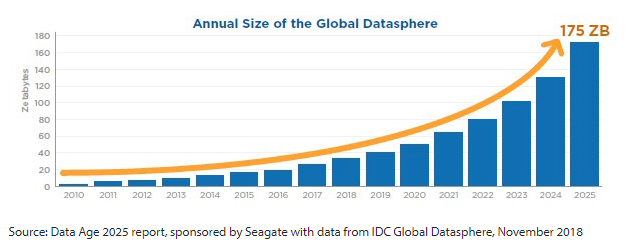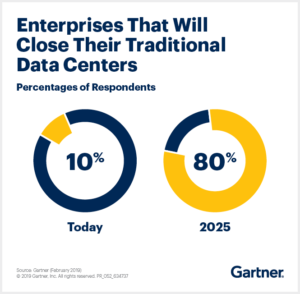While an exponential growth in data generated is not new, this growth has exploded in 2020. According to IDC, enterprises typically see 30–40% increase in data year over year. So where does all this data go?

To answer this, IDC tells us that by 2023, more than 40% of the world’s data will be stored in hyperscale or cloud data centers. This means that much of this data will end up in the public cloud.

The current pandemic is making IT leaders revisit fully managed cloud services versus an on premises, self-managed model. In many cases, we have seen a large majority of customers accelerate their journey to the cloud.
At AWS, customer base stretches across so many different industry segments, company sizes, geographies, and includes both public and private organizations. Observing from a unique position we can see the commonalities and differences in the way customers choose storage deployment models, strategies, and the way they leverage cost optimizations.
One of the customers, Direct Supply, uses a combination of AWS services to plug its file-based applications with the data and performance it needs. Instead of making large capital purchases, they now only procure the exact amount of storage that they require.
There is no over-provisioning, as is necessary with on-premises storage systems. Additionally, their leaders now have a view that tells them exactly which part of the business is using what data, and at what cost.
“Leveraging AWS Storage Gateway’s File Gateway we are able to store and access objects in Amazon S3 from our NFS and SMB file-based applications with local caching, which helped Direct Supply reduce our costs to store large datasets. The consumption-based pricing model for Amazon S3 means we’re not paying for storage that we’re not using. Asset tagging has streamlined our ability to introduce a show-back / charge-back model to our business leaders.” Dave Stauffacher, Chief Platform Engineer, Direct Supply, Inc
While Direct Supply benefits from aligning its expenditure with utilization, other customers like Discover Financial Services are benefiting from the savings they have gained by not having to administer storage.
By using the on-demand consumption model of the AWS Cloud, Discover is able to measure significant savings in time and money. Savings in time are particularly valuable since the opportunity cost of time spent on managing storage can be significant. So, instead of spending money to manage storage, Discover is essentially making money by not managing storage! You can also read how Discover secures file transfers and saves cost with AWS Transfer Family.
Discover provides banking and credit products to help customers achieve their financial goals, such as establishing good credit, paying for a college education, and consolidating debt. Over the years, individual analytics practices sprang up within Discover’s teams and business units. Discover’s leadership team believed that bringing those practices and teams together could improve analytics and create consistent tools across the organization.
AdvancedMD turned to Amazon FSx for Windows File Server (Amazon FSx). After moving its on-premises workloads to fully managed Amazon FSx, the AdvancedMD team reduced time spent on managing database backups by 85% (26 hours per day to 4 hours). Removing the associated cost and time overhead freed AdvancedMD to refocus its efforts on supporting a 400% spike in demand for its Advanced-Telemedicine application — connecting doctors and patients during the COVID-19 pandemic.
“Our business world changed. Supporting our business application offering became our focus—an all-hands-on-deck scenario. Without Amazon FSx for Windows File Server, we would have spent multiple hours every day on our database backups as opposed to actually helping our business grow.” Steve Coombs, Sr. Site Reliability Engineer, AdvancedMD
The Enterprises of today as part of their Digital transformation journey are increasing their shift to the cloud.

Credits: Customer innovation during the COVID-19 pandemic | AWS Storage Blog (amazon.com) Wayne W. Duso, Vice President, AWS File, Edge, and Data Services Wayne is a Vice President at Amazon Web Services (AWS) where he leads businesses delivering cloud infrastructure services.
Author: Puneet Singh

Recent Comments